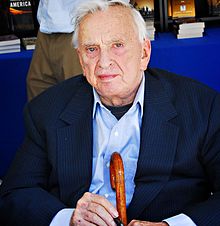Rhetoric and Composition/Editing
Editing and Revising: One and the Same?
[edit | edit source]
Although many writers and even some instructors use the terms interchangeably, you may find it helpful to see editing and revising as two different activities. For our purposes, editing means going through a piece of writing and making grammatical corrections--or sentence-level changes. Revising, on the other hand, occurs when a writer makes paragraph-level changes to a text, such as making sure the thesis statement is correctly supported in each body paragraph.
For example, during the editing phase, a writer may check to ensure that there are no sentence fragments. Whereas during the revision stage, the writer may check to ensure that each paragraph has a topic sentence that corresponds with the thesis statement. We talk more about that process in the Revising chapter.
You may be called upon to revise or edit other students' writing. This process is often called Peer Reviewing and is given a separate chapter in this book. If you're concerned about how to diplomatically edit someone's work without being offensive, be sure to read it carefully.
You can (and should) also edit your own work. This simply means going back over what you've written and finding ways to improve it. Most writers frequently switch between drafting new sentences and paragraphs and editing ones they've already written.
In this chapter, we go over some basic editing strategies and some specific things to look for during the editing process.
As previously mentioned, revision concerns large sections of text, while editing concerns individual sentences. Below is a list of potential errors to consider while editing.
- Fragments
- Run-on sentences
- Dangling or misplaced modifiers
- Adjective and adverb use
- Verb usage and tense
- Subject/verb agreement
- Pronoun/antecedent agreement
- Sentence balance
- Comma Use
- Spelling
- Word choice (connotation vs. denotation)
- Format/presentation
Sentence Structure
[edit | edit source]
- Use active verbs.
-
- Be-verbs (is, am, are, was, were, be, has/have been) indicate condition and often require an extra sentence or clause to be sound. Active verbs allow you to compose sharply without numbing the rhythm of your writing. Read your writing with an objective eye and think: “How can I make every sentence and paragraph straightforward and simple?” Below are examples in italics of wordy and confusing verbiage. Below the italics are the same sentences that have been simplified.
-
- ''The sharp rise in fuel prices is a serious challenge to trucking firms. It makes it hard for them to provide timely service to customers and to meet payroll expenses.
- Sharply rising fuel prices challenge trucking firms by causing delays in customer service and payroll.
- Primary causes of the rise in fuel prices are an issue of confusion for many citizens. They don’t know how to fight the rise because they don’t know its cause.
- Primary causes of rising fuel prices elude many citizens, making them unaware of how to fight the increase.
- Name the people. Directly state who or what group is acting in your sentences. Note the contrast in power and clarity among the sentences below
- Without people: A citywide ban on indoor smoking in Duluth originally caused a marked drop in bar patronage.
- With people: When the Duluth City Council passed a citywide ban on indoor smoking, many people stopped going to bars.
- Eliminate wordy phrases. Certain stock phrases are weak and wordy. They can make you sound stuffy or as though you’re just trying to fill up space. Use these replacements
-
- Because, Since, Why: the reason for, for the reason that, owing/due to the fact that, in light of the fact that, considering the fact that, on the grounds that, this is why
- When: on the occasion of, in a situation in which, under circumstances in which
- About, Regarding: as regards, in reference to, with regard to, concerning the matter of, where ABC is concerned
- Must, Should: it is crucial that, it is necessary that, there is a need/necessity for, it is important that, it cannot be avoided that
- Can: is able to, has the opportunity to, has the capacity for, has the ability to
- May, Might, Could: it is possible that, there is a chance that, it could happen that, the possibility exists for
Luckily, Internet users can find numerous web sites about how to eliminate wordiness.
- Use Parallelism in sentences. Parallelism sounds difficult but is easy to write or edit. Parallelism uses the same pattern in words and structure to show equal importance or provide balance in sentences
-
- John likes reading, his studies, and talking.
Corrected: John likes reading, studying, and talking.
- We were asked to calculate scores, record them, and putting them on the bulletin board.
Corrected: We were asked to calculate scores, record them, and post them on the bulletin board.
- The science class had to dissect frogs or were experimenting with gases.
Corrected: The science class had to dissect frogs or experiment with gases.
To check for parallelism, first circle or highlight every and or or to check for balance in the sentence. List the phrases from your sentence on a separate piece of paper. Example: reading, his studies, and talking. Make corrections to your list to create balance: reading, studying, and talking.
Once you fix a few sentences, problems with parallelism become easier to recognize and to correct!
Editing Tips
[edit | edit source]
Editing is like going over your writing with a fine-toothed comb, scanning the surface and the depths for errors, misstatements, and a lack of clarity. First, keep resources close. Gather your writing handbook, dictionary, thesaurus, handouts, and any other editing resources and keep them close. This way, you will not be tempted to guess at the correct way to do something. Instead, use your resources when you need them. Spelling errors can be avoided if you have a dictionary nearby. Don't rely on spell check. It will only correct the spelling, not the proper usage of a word. For example, the word their means someone's possession of something. When used in a sentence, "We sat in their chairs." On the other hand, there is used to express an area or place. When used in a sentence, "We sat over there." Looking up these words in a dictionary will prevent unnecessary errors from occurring.
Secondly, know your errors. Keep a list of the errors you tend to make next to a corresponding list of corrections. No writer makes unique mistakes all the time; instead, our mistakes are habitual. Know what yours are by looking at your instructor’s comments on past papers or by working with a writing tutor. That way, you can enhance your editing strategies by watching specifically for these types of errors. If there are grammar rules you find yourself looking up more frequently than others, write them down for future reference.
Thirdly, break it down. Edit one thing at a time. Instead of reading your paper through from start to finish once or twice and trying to catch everything, try searching for one thing at a time. For example, you might go through your paper once to tighten up wordiness. Then, read through a second time, while looking for one type of error which you frequently make, such as comma splices. Then, try reading a third time looking for words that may have been misspelled when you ran a spell check. Read a fourth time for another characteristic error, such as subject-verb agreement.
Next, reduce visual clutter. Use two pieces of blank paper to cover up everything but one sentence at a time. This forces you to pay closer attention to the words because they are the only thing you see. Normally, our eyes move all over a text as we are reading; this trick will prevent that tendency. Lastly, work backwards. Read from the end of your paper to the beginning, one sentence at a time. When we read in the conventional manner--top to bottom or left to right--we tend to read quickly and are constantly leaping ahead without really focusing on the words. We tend to see what isn't there, because we know what it is supposed to say. Reading backwards forces us to slow down, thereby allowing us to catch more errors within individual sentences.
When reviewing your work, it is also important to ensure that the tense you choose remains consistent. Tense refers to the relation of details in the past, present, and future. For example, one writer may tell a story about going to the mall in the present tense by saying, "I am walking around the mall and I see my third grade teacher." Another writer may choose to relate this story in the past tense by saying, "I was walking around the mall when I saw my third grade teacher." Although it is important to select the tense that best suits the particular context a writer is using, it is equally important to remain consistent with whatever tense is chosen. Inconsistency within tense is extremely confusing for readers. It is important to review your use of tense to ensure that your language is clear. For example, if you were to say "I was walking around the mall and I see my third grade teacher" your audience would be very confused, wondering if you were seeing your teacher in the present or last week. By keeping your tense consistent your reader will always know when you experienced what you're writing about.
Perspectives on Style
[edit | edit source]
Prescription and description litter these pages and others. Some writers tell you how to write: how your writing should look, sound, and feel. These writers prescribe rules (writer's handbooks are their Bibles). Should you follow them? Prescription can be limiting. In some instances, it may be profitable or necessary to follow a formula (when writing a legal document or a theme for your fifth grade teacher, for example). It is necessary to learn the rules, if only to break them. Rules are not static, however. They evolve. Rules are added, changed, omitted. Current fashion is the only certainty.
Other writers describe how text is actually written. They analyze past and present text, highlighting similarities, differences, and respective efficiency. They define goals and purpose. It may be purposeful to apply rules, yet at other times it may not. But do not allow yourself to become limited by prescription.
Examine your goal and determine the best approach to reach it.
Why discuss style in a section on editing? As you write, you make choices. As you edit, you examine the effectiveness of those choices. Some choices are more effective than others and may reinforce your message. It all depends on your goal, your purpose, and your audience. Are you writing a birthday greeting or a dissertation? An instant message or a public address? Your choices determine your text's effectiveness; they help relate meaning.
As you can imagine, there are as many perspectives on style as there are available topics for writing. The following is an attempt to present some of those perspectives.
Richard Lanham on Prose Styles
[edit | edit source]
A book written by Richard Lanham titled Analyzing Prose is a great tool for writers looking to pick up ideas for new styles. Through this work, one can can gain techniques covering the following styles:
- Opaque and Transparent
- Noun and Verb
- Paratactic and Hypotactic
- Periodic and Running
Learning how to properly incorporate these styles into your own writing can transform your work from everyday textbook style writing into colorful, creative, individualistic styles.
